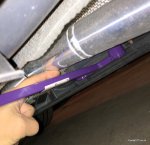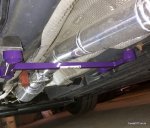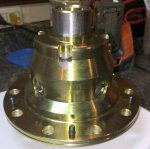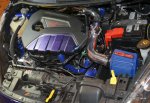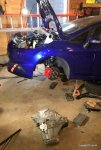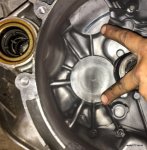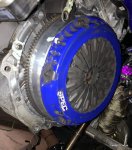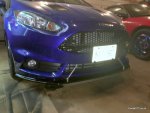Each LSD is available with three variables which will change the characteristic of how the car will drive. These settings are:
Preload setting - the internal clutch plates when assembled are forced together and the amount of constant force applied to the plates (preload) can be altered. A low preload of say 25lbs/ft will require a reasonable amount of torque from the transmission before there is enough force to lock the plates together. This will result in an LSD that is termed less aggressive and acts in a progressive manner. Typical use: road cars and light vehicles.
On the other end of the spectrum, a higher preload of say 65lbs/ft will need less torque from the transmission to lock the plates together i.e the diff will lock easier and more often. This will result in an LSD that is termed more aggressive and is much less progressive. Typical use: competition cars and heavy vehicles.
Ramp angle, acceleration (corner exit) - the planet gear pin is sandwiched between two ramp blocks. The recess where pin is located has an angled ramp. As acceleration inertia is applied to the diff, the pin moves against the angled ramp, moving the two ramp blocks apart. This consequently applies an additional force to the clutch plates which when large enough will result in either a partial or full lock of the plates. By altering the angle of the ramp, we can alter the characteristics of the LSD. A low angle of say 30 degrees will allow the blocks to be pushed apart much easier than a higher angle of say 50 degrees. The 30 degree ramp will therefore have a more aggressive locking action than the 50 degree ramp.
Ramp angle, deceleration (corner entry) - identical to above, the ramp blocks can also have a ramp angle on the opposite side of the pin location which will provide a locking action when subjected to a deceleration inertia. However it is not always beneficial to have a locking diff during the braking stage e.g. road use and most tarmac events. In this situation, we use a 90 degree block which eliminates any locking action during deceleration.
Note that ramp angle settings are always written with the acceleration angle first e.g. 40/90.
So what settings do you need? Well unless you're an experienced racer, you are unlikely to know where to start. So here are typical suggestions as to what we would advise:
Road use only: Ramp angles 50/90, Preload 25-30lbs/ft
Track/Sprint/Hill climb: Ramp angles 40/90, Preload 55-60lbs/ft
Rally: Ramp angles 30/90 or 30/60, Preload 65-75lbs/ft
Drifting: Ramp angles 45/45, Preload 45-50 lbs/ft
Ovals: Ramp angles 40/90, Preload 50-55lbs/ft
Ovals (old style option): Ramp angles 45/45, Preload 50-55lbs/ft
Drag: Ramp angles 30/90, Preload 75lbs/ft
Remember that these are only recommendations and 3J can build an LSD to suit almost any requirement. Additional ramp angles available include: 20/75, 35/35, 45/35, 30/30, 60/40 and 80/20. Also remember that pre-load settings from 0-150 lbs/ft can be requested.
Secondary ramp angles - as mentioned earlier, all NXG units are supplied with 2 pairs of ramp angles which can be changed when the unit is taken part. Below is a list of the ramp angle pairings:


